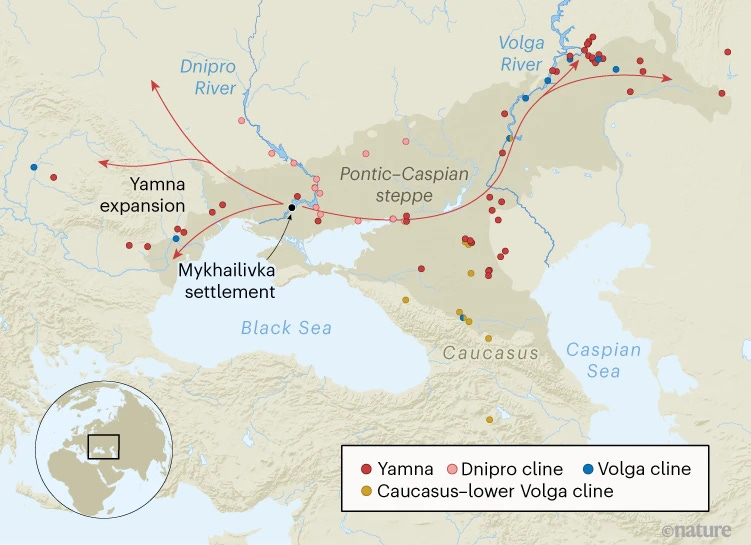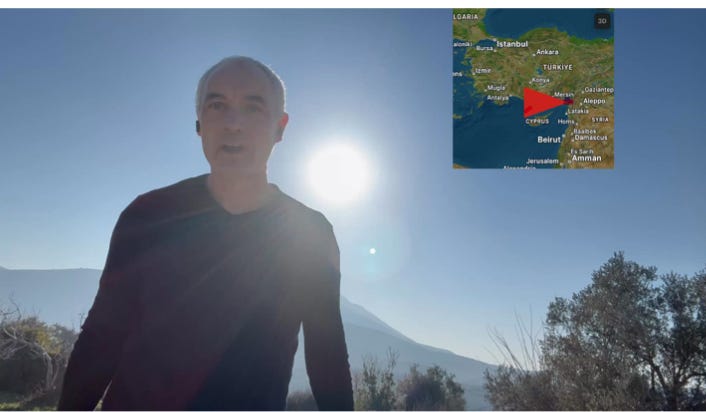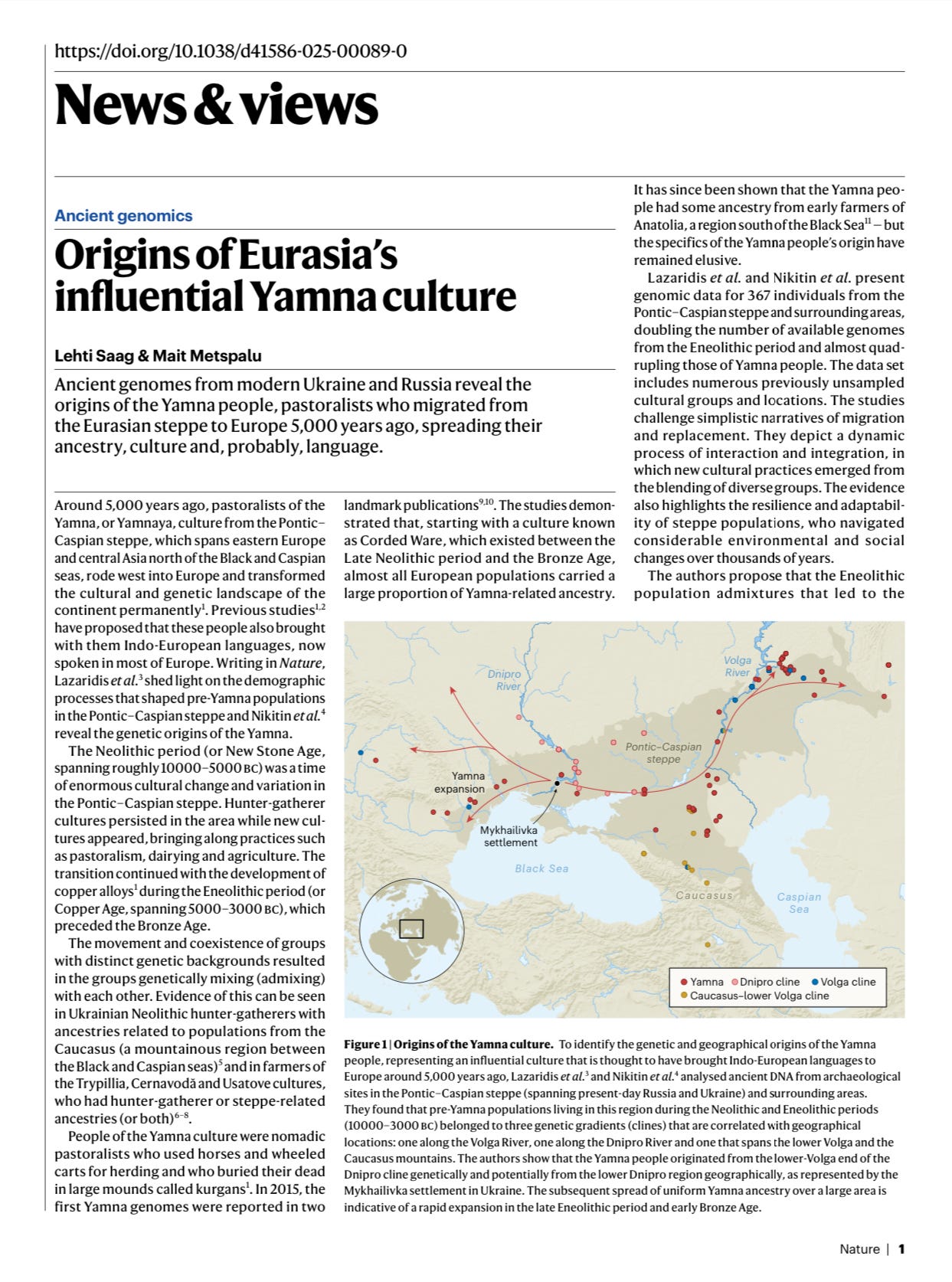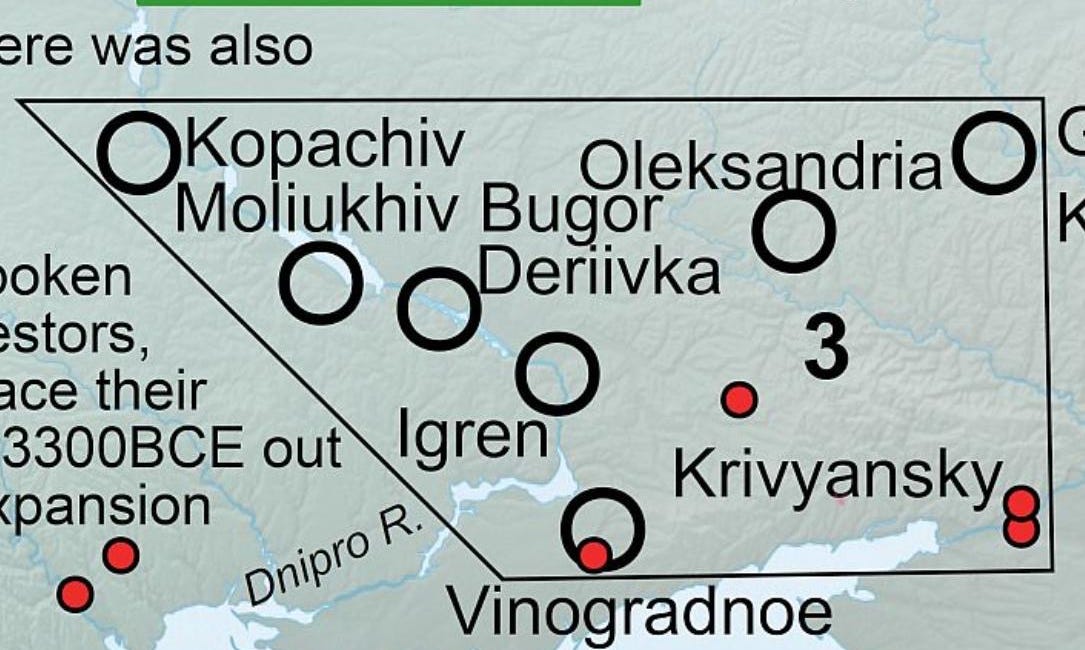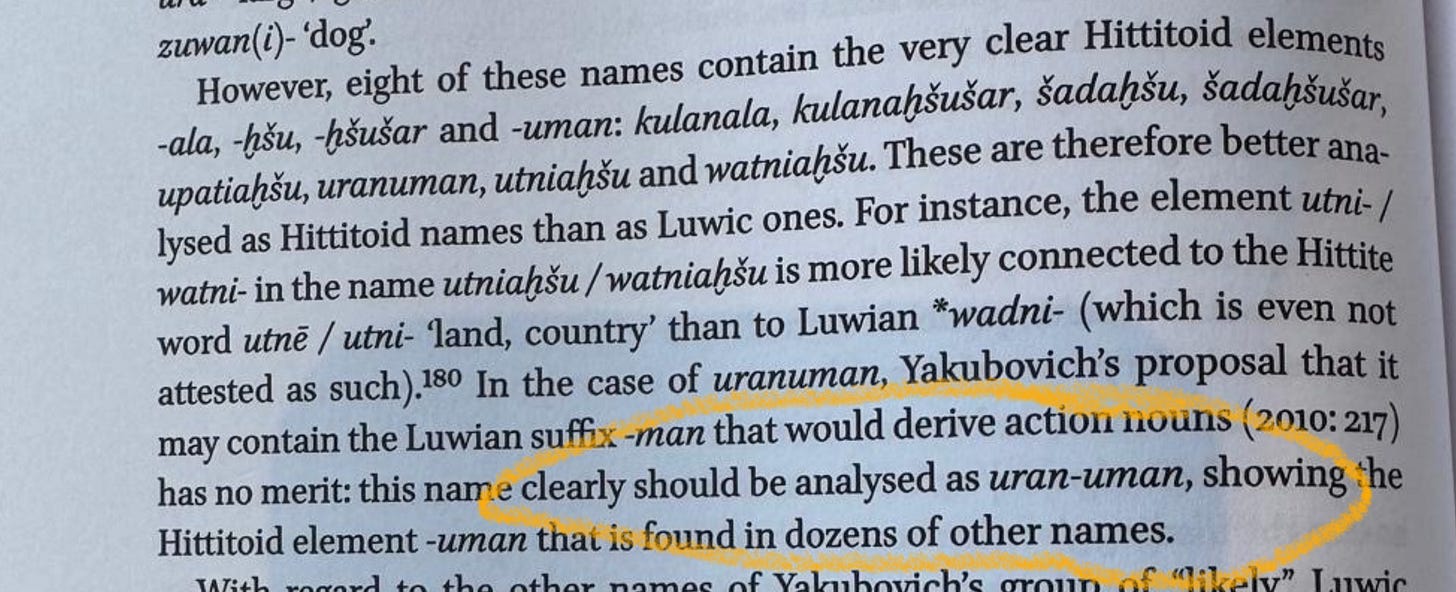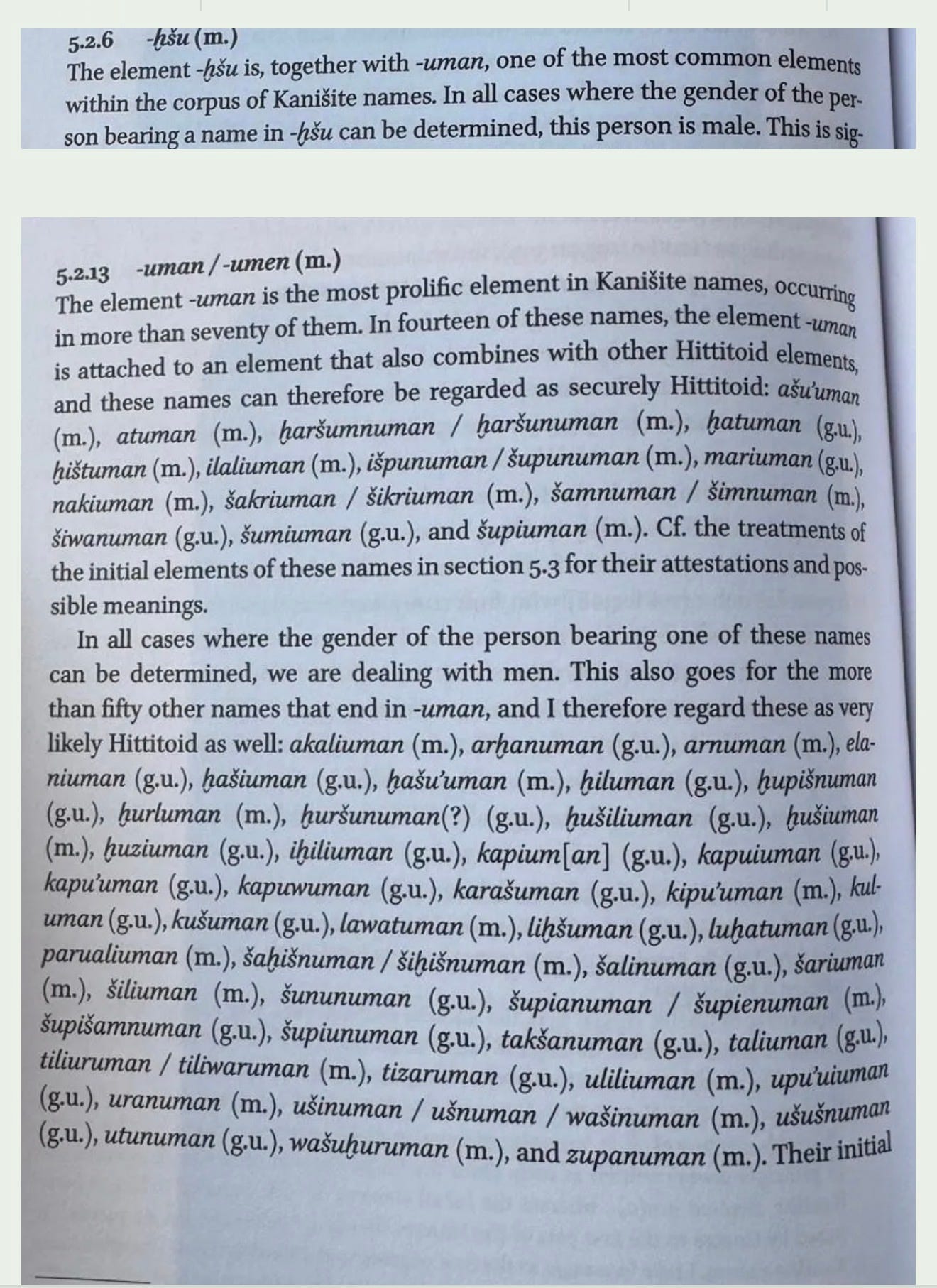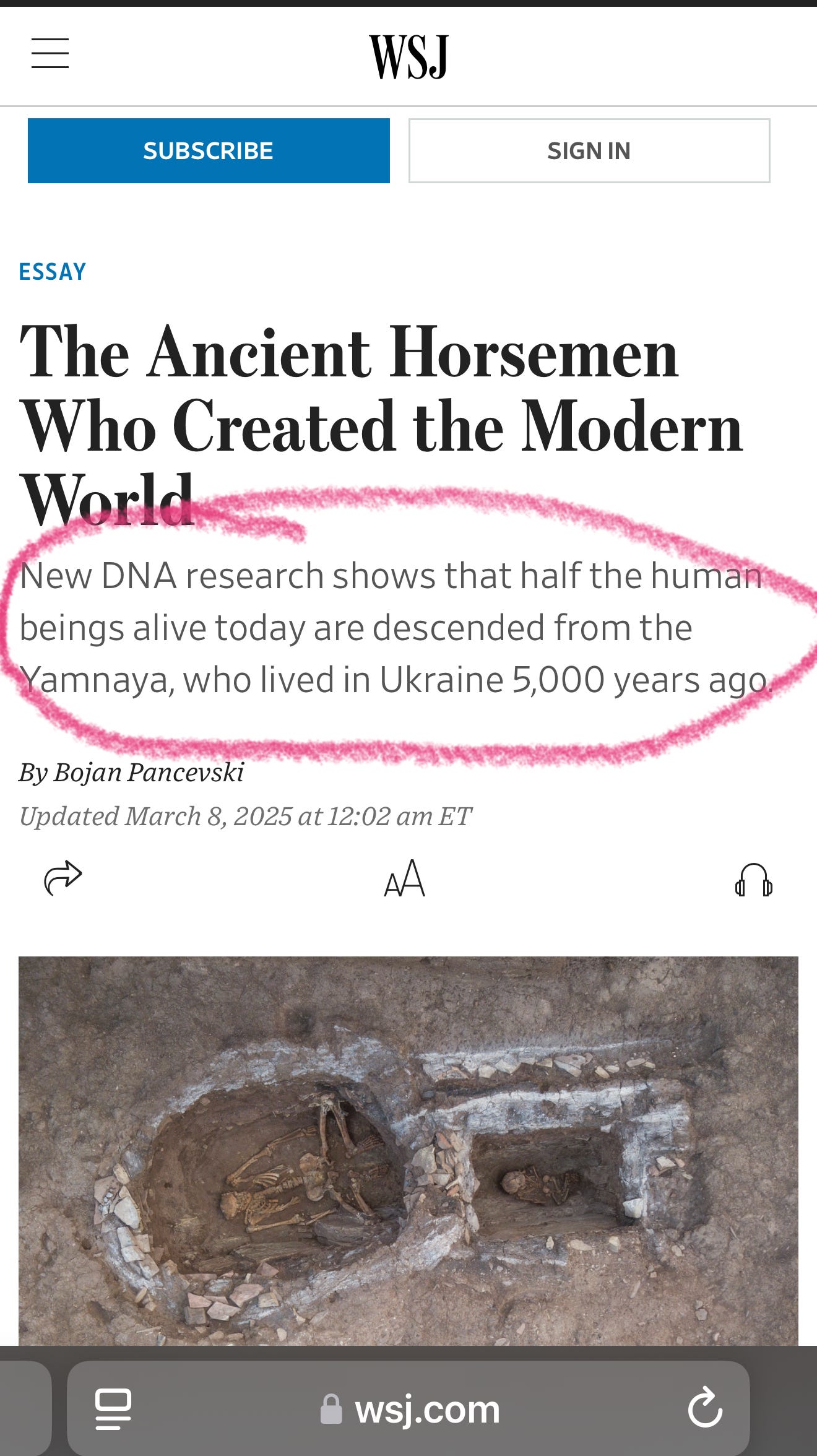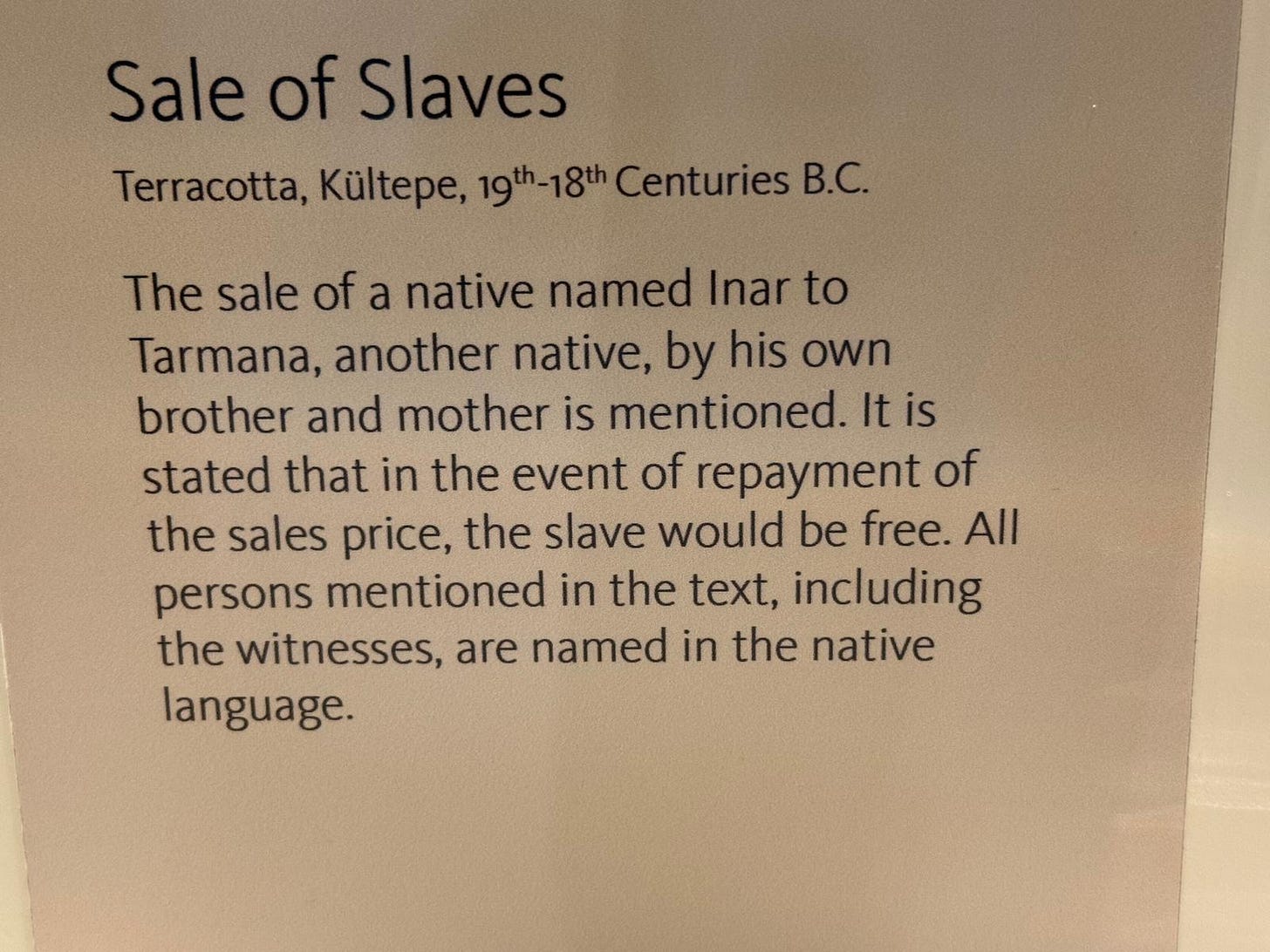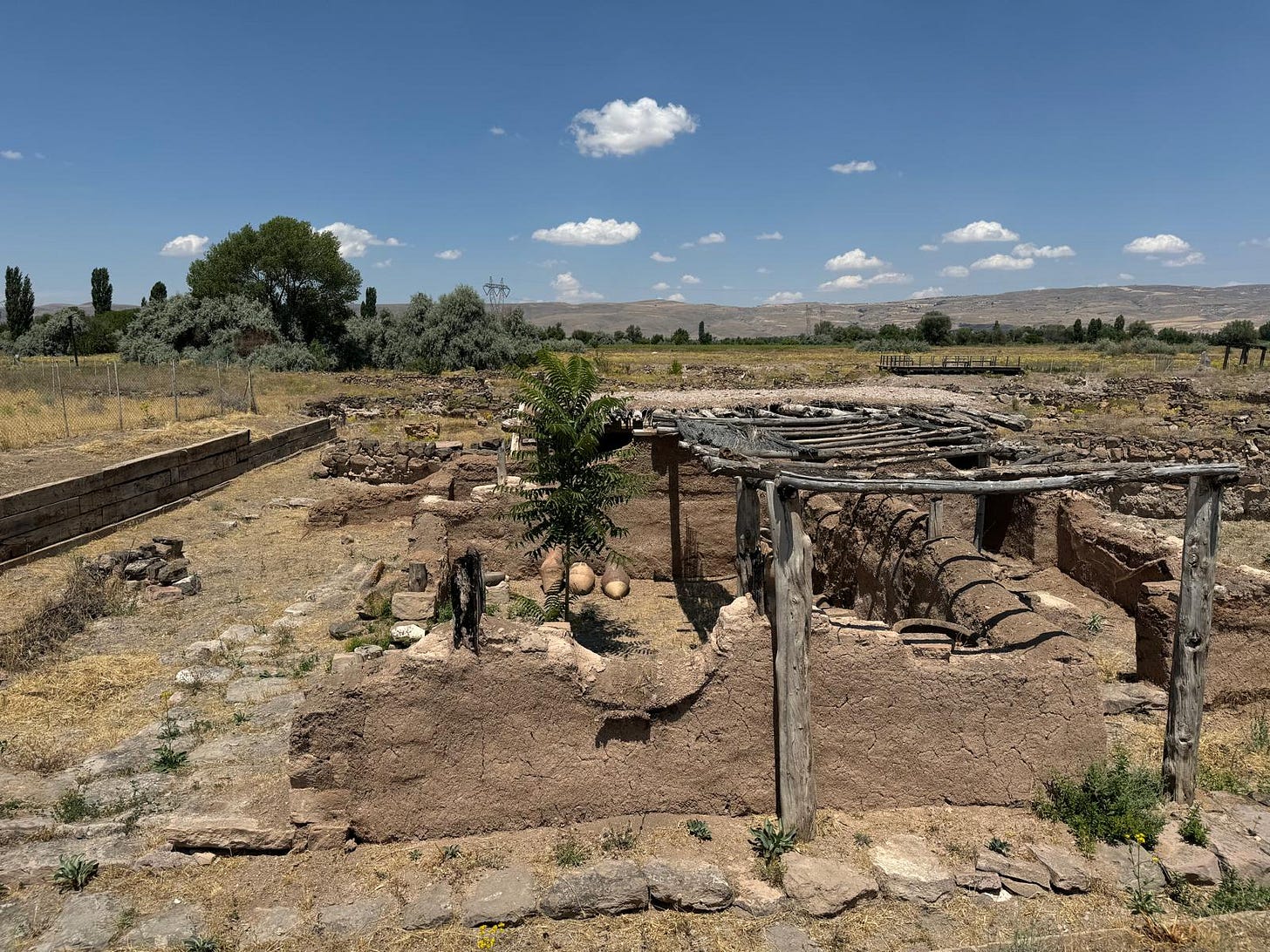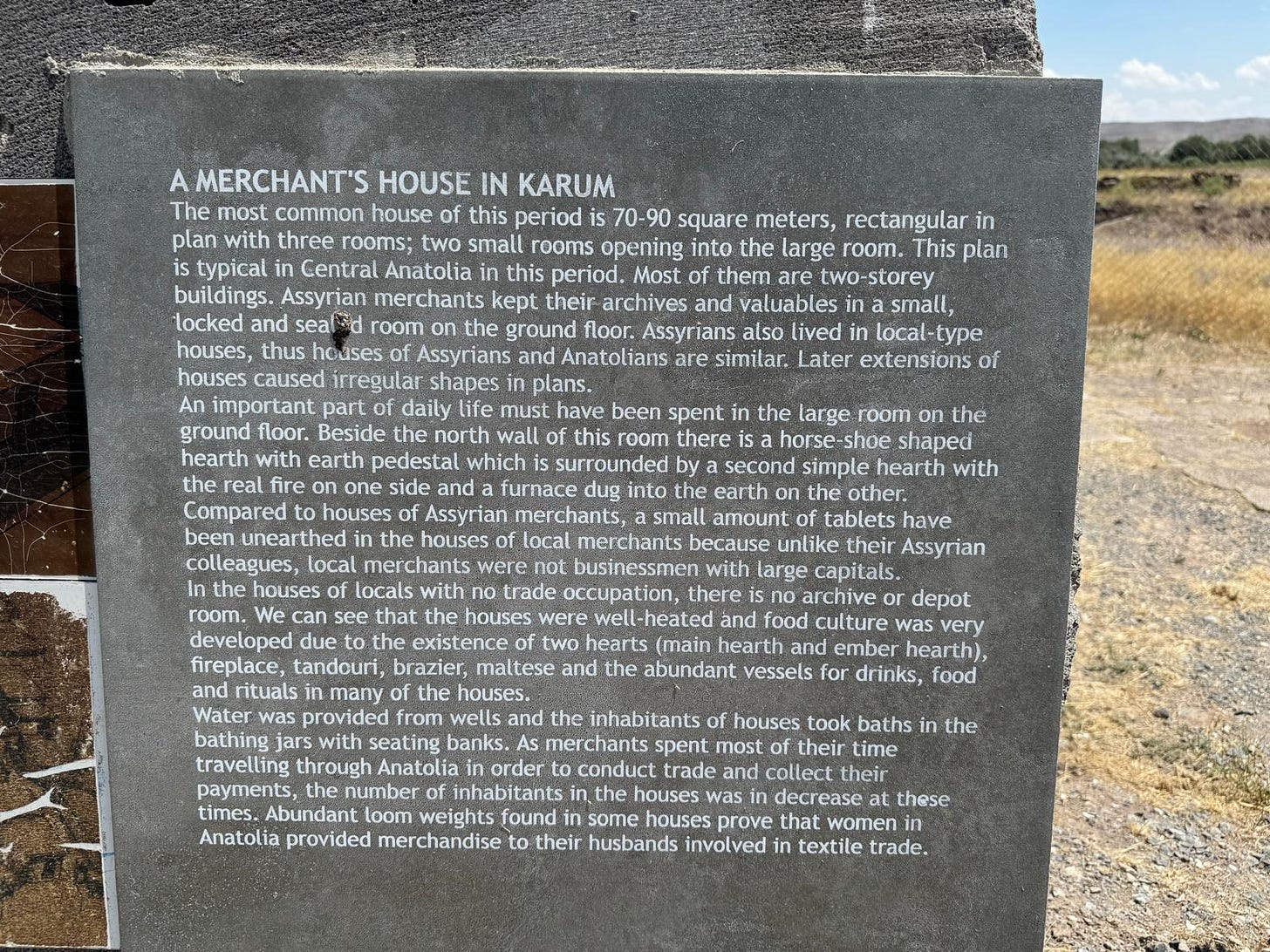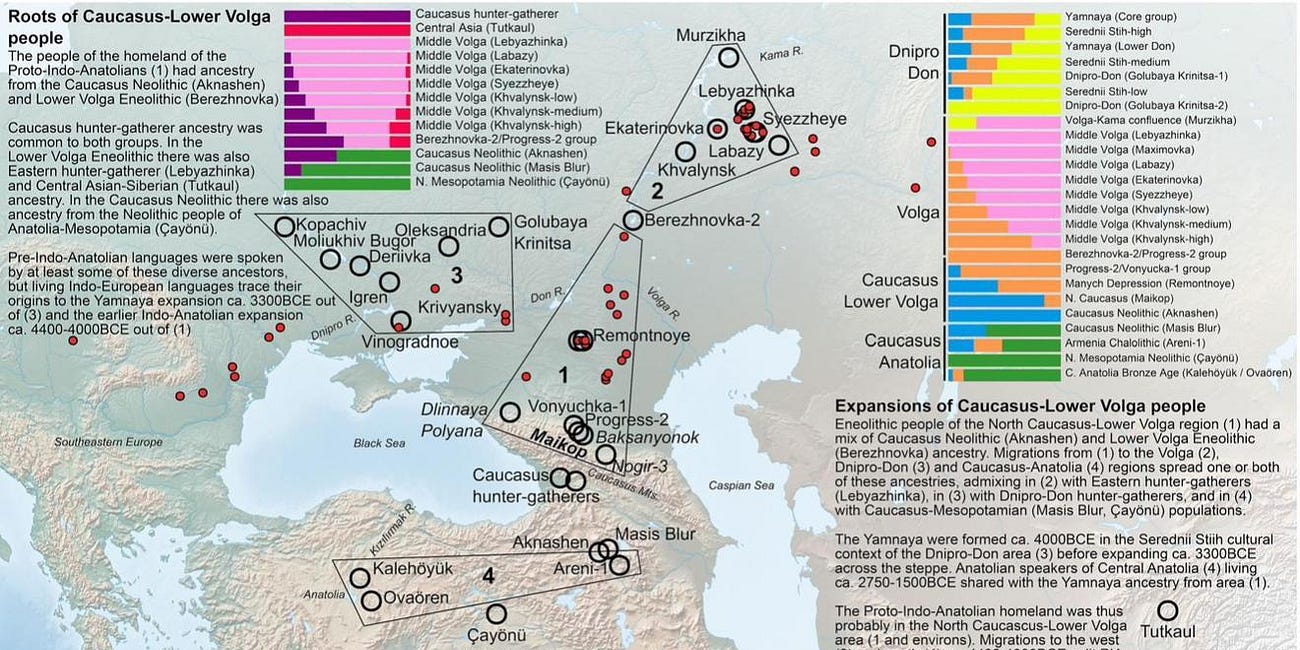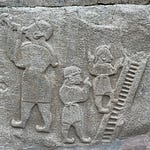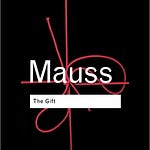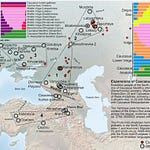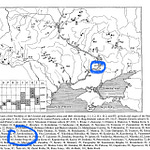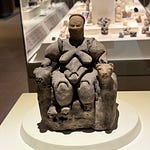
Hi there, I’m Decoding Trolls. Welcome to Finding Manuland. This is the “Archetypes” episode.
When we are thinking about transforming our own mental models—our entire conception of human culture in our minds—this is hopefully really why you are going to be interested in Finding Manuland. Obviously, you may not accept everything I say, or you may Google it and go, “Oh, maybe this or maybe that,” but that doesn’t matter.
I’ll just say, as an aside, this week The Wall Street Journal has published an essay under the title “The Ancient Horseman Who Created the Modern World.” New DNA research shows that half the human beings alive today are descended from the Yamna, who lived in Ukraine 5,000 years ago. That was published in The Wall Street Journal on the 8th of March, 2025.
So, we’re not chasing genetic evidence; we’re chasing the evidence of sound and meaning—the cryptotypic signifying system which I believe the “MN” sound signifies. We’re interested in tracing that sound, the MN sound, from Ireland to India. Across space from Ireland to India, and across time from around 4100 BCE until today—so, 6,000 years. In Finding Manuland, we achieve this feat through various means.
But that is not the only reason to listen to Finding Manuland. What really matters to me is that I can communicate to you my energy, my manner, my positive manner. Hopefully, I’ll do my best, as we all do, to communicate positive manner every day. Now we have this technology where we can communicate our manner, our meaning, our inner self, and our energy across the entire world and across time. Because obviously, as I record this, I don’t know when you’re going to listen to this. It may be in a hundred years. So, this is why hopefully there’s a big market for this.
The vehicle for this is this amazing story about how this one sound traveled with this one community of people, the Yamna, with an MN sound in their name. I believe the idea of having a reminder lodged in our minds helps. When we are in these moments—reminder, minds, moments, all MN words—when our emotions take control and troll us into perhaps making mistakes and communicating bad or negative manner, then we’ll remember Finding Manuland. That will remind us to communicate positive manner in this moment.
Then, we can just switch from being really annoyed at this poor person at the other end of the phone line, or our boss, or our pet who’s nagging us for food when we don’t have it, or when we can’t afford to do something. We get really annoyed, but then we just flick a switch, and we flick that switch into communicating positive manner, positive energy.
So, if you’re asking me what the most important element or the most important meaning of Finding Manuland is, it’s this: I want us to use Finding Manuland as a little mantra. As a way of obviously contemplating all the amazing aspects of our human history since 4100 BCE until today, across the space from Ireland to India, but ultimately, this only matters in the moment when we are perhaps communicating negative, neutral, or indeed positive manner. We recognize that in the moment, and we give ourselves a little pat on the back. A little bit of pride never hurt anyone.
So, part of the sign that our mental model of humanity and culture is being transformed is that our human relationships are being transformed. We’re better in conflict situations. We’re better in the moment when we used to get triggered into communicating negative manner.
But really, what I am trying to do in Finding Manuland, as you’ve probably picked up, is to transform the archetype—your archetype of our human history since 4100 BCE—in your mind, just as it has been transformed in mine. Just as that Wall Street Journal article is making a tiny drop in the ocean to transform people’s mental archetype of ancient Ukraine and where the Indo-European languages emanate from.
We saw earlier in February, on February 5th, Nature published an article which establishes as a matter of scientific fact what up until now many archaeologists and linguists had referred to as the “Steppe Hypothesis.” They referred to the Pontic-Caspian steppe as the place somewhere between western Ukraine (on the border by the Danube) and Kazakhstan, where the Yamna lived. They were the first community of humans to speak an Indo-European language—and let’s note that MN is in “human” as well—and that they came from somewhere in that space.
Many Russian archaeologists had privileged places which are in today’s Russia. Russian philosophers like [Aleksandr] Dugin, who drive the current imperialist bent of the Russian Federation and provide the ideological backing, justify their willingness to destroy Ukraine by reference to histories which place Ukrainians in some subservient position to Russians. But this Nature research article of the 5th of February establishes as scientific fact what many linguists, archaeologists, and amateurs such as myself had already worked out: the Yamna emanate from this small community of people on the Dnieper River, in Mykailivka village in Zaporizhzhia Oblast, which is the type site of the Yamna for archaeologists.
We’ll go into this article again, but I just wanted to raise that for a second. So, the first aspect of every Finding Manuland essay or podcast is what I’ve just spoken about: the main purpose is to communicate positive manner in the moment.
The second element of every Finding Manuland aspect is linguistics. Mana is the X-factor. It exists beyond linguistics. This is what I mean by the fundamental “cryptotypic signifying system.” Mana is merely the access point. It is the opening into the cave, the opening into the mountain, the keyhole. It is the access point. This is fundamental to all human and non-human animals. All sentient beings experience mana and all sentient beings communicate mana—whether or not they can communicate about it or talk about mana is another question, but we as humans can.
And so, the linguistic element—which I did talk about in the last episode and which I’m often raising because it’s a really important element—establishes the basis for the argument in Finding Manuland. Not only did the genes and the language pass from this Yamna community in Mykolaiv, ancient Ukraine, to Ireland and India, but the entire Indo-European language family, all the extant, living Indo-European languages today, emanate from that community. This is what that Nature paper established.
If we’re going to look at that, we’ve got our MN sound, which is obviously what Finding Manuland is mainly about, but we also have this other idea: Dyeus, the sky, and Pater, the father. If we can find this sound—as we do in Greek, Vedic Sanskrit in India, in Roman (Jupiter), in the Germanic languages, in English as “Day,” and also in the idea of death (to go into the sky)—we realize something profound.
We don’t really know, or many of us don’t really know, what happens when we supposedly die. Or, as we say in modern English (a Germanic language), we “go into the sky,” we’re dead. Once we find that in all these different Indo-European languages, then we know that it is possible for sounds, meanings, and indeed entire ideological systems associated with God (Zeus), and with the sky (Zeus), and with a vision of what happens after we die to persist.
If that passed from Ireland to India from this Yamna community, then it is possible the MN sound and its meaning passed as well. It’s a proof of concept.
It’s also very interesting, and this is why I come back to Zeus, Zeus Pater, and Zeus Mount Hazi. I was up on that amazing mountain, Hazizi (which is the Hittite name), recently. The Hittites were the earliest attested Indo-European language speaking people. We’ve got 7,000 documents from the Imperial Library at Boğazköy. In that, we understand the holiest mountain was Hazi, which I visited. You’ll see that it’s the same Zeus, and we have Jupiter in the Italic culture, the Roman supreme god.
Obviously, the Greeks and Romans interacted directly, so maybe the Romans just borrowed Jupiter directly from Zeus Pater. But then we see that we’ve got Dyaus Pita in the Vedic language. So we’re wondering: okay, well how did a supreme deity get from Greece to India, or from Rome to India? Of course, we know Alexander the Great was in India, but is that enough to establish it in the language? Then we discover, oh actually, Dyaus Pita is there almost a millennium before Alexander the Great gets to India.
So again, how are we going to explain this if we don’t have an idea of the genetic transfer in various ways between the Yamna community in Mykolaiv, centered on the Dnieper River? If we don’t have an idea of the linguistic transfer, the existence of the Indo-European language family where the roots of verbs and the syntax are the same in this whole series of languages: Celtic, Germanic, Baltic, Vedic, Iranian, and so on.
I’ve written before about how “Tuesday,” the name of our day of the week, actually means God. Tiwaz literally means just God—the entity in the sky, the concept in the sky, Sky Father, Zeus Pater. Tiwaz was a Germanic God. So, you’re basically saying Zeus, or “Sky,” for Tuesday. Try and remember that next time you say Tuesday, because you’re really invoking the sky, invoking two gods. It’s the most godly day.
But we’ll come back to Mount Hazi. The sound and meaning, Hazi, Zi, Zi—it’s a mountain, the holy mountain. Zeus lived on a holy mountain. We know that in Hittite, Zeus meant God. We can deduce that Mount Hazi, on the border between Turkey and Syria, derives from this.
Mount Ḫazzi, the Hittites’ Mount Kassios: Episode XXXIV
Following in the footsteps of the Hittite emperors and empresses, Decoding Trolls makes a pilgrimage to Mount Ḫazzi on the Syria/Türkiye border. Decoding Trolls narrates his visit to Ḫazzi, or as it is written in the bible Mount Zephon (Saphon in Greek), the most sacred mountain in Hittite religion.
So, the third component is journeying.
* First component: Communicate positive manner.
* Second component: Linguistics (which sits in our minds every moment we speak).
* Third component: Journeying through cultures, time, and time-space to transform our mental archetype.
I want us to privilege ancient Ukraine in the way that today perhaps we privilege ancient Rome or ancient Greece. Because everything in ancient Rome, ancient Greece, ancient India, ancient Iran, and ancient Ireland—all the languages and religions which emanate from this Yamna community—is like an acorn growing out of a seed. That seed is in the Yamna community in Ukraine.
We can trace that through every single branch of the Indo-European family of languages, no matter how early they split from that Yamna community in Mykhailivka.
The general consensus in this Nature paper of February 5th, 2025, underpins this: this community of Yamna last lived together around 2500 BCE. At that point, for whatever reason, the community began to divide.
The Hittite and Anatolian branch split from a community which lived between the lower Volga and today’s Armenia around 4100 BCE. That branch eventually conquered all of Anatolia until the Mongols and modern Turkey gradually eradicated the Indo-European language as a daily language in that space. But that branch is attested in the 7,000 or 8,000 texts in Boğazköy, which I visited. If we can find the MN sound in there, then we know we’re on to something—that the actual Yamna who lived in Mykolaiv used the MN sound for this meaning regarding the exchange of energy.
I am assembling a new archetype for your view of the whole of Indo-European human history in your mind, like putting together an IKEA bed. It takes a while to make it stable and secure enough to import into your proper bedroom. That is what I’m doing with Finding Manuland.
When I use the term “human,” I’m using that as an emanation of the Indo-European languages. It happens to be an MN sound. We humans, we have our mind shining through our bodies, like the light shines through the moon. That mana, that energy, is in all of us as humans.
Interestingly, in animals, who are also animate creatures, there is a reversal of the MN. We find this in words like “name” (which is an anagram for Manet) and “moniker.” We see this reversal in animal, animate, and anima (meaning soul). We’ve got two forms of sentient beings: human and animals. In one, we’ve got MAN, signifying the mind shining through us; in the other, we’ve got animal. We’re slightly distinguishing it.
We vaguely know a mental model of history that starts with Rome, Greece, or Egypt. But if you’re like me, the space between Ireland and India was full of blanks. I wasn’t even aware of them because I didn’t focus on them. My archetyping helped me avoid focusing on what I didn’t know—like the geography of Turkey.
I’m strictly traveling there as much as I can. I was there for three weeks after the New Year, visiting Mount Hazi. Each time I go, my mental blanks fill in. When I go to places with the MN sound in their name, or places associated with texts or orthostats (stones with carved stories), I am trying to imbibe the energy. Gradually, over the coming years—God willing—I will fill in that geographical space between Ireland and India and adjust my mental model from 4100 BCE to the present day.
Most of us have access to Apple Maps or Google Maps. If I mention Armenia, note the MN sound.
Who was Menua?
Recently I drove by the source of one of the rivers of Babylon: the Euphrates. Menua (790 BCE to 775 BCE) was the third monarch to rule the Biblical era Van / Ararat / Urartu / Bianili kingdom, whose successor state two millennia later is Armenia.
Maybe you think of it as just a former Soviet place. But in two seconds, you can look it up. You’ll see how small it is today (3 million people), but once it extended almost to Constantinople and well into Syria. We see remnants of that with communities of Armenians still in today’s Syria. We remember its precursor culture, Ararat (mentioned in the Bible), where Noah’s Ark ends up. There is your geographical mental model expanded. That’s the equivalent of your IKEA bed stand—you can take it out of the spare room now.
Armenian is itself an independent branch in Indo-European languages. It is analogous to the entire Germanic branch. Armenian, spoken by only 3.5 million people, is the acorn seed equivalent to the entire Germanic or Italic branches.
I hope you can just lie down, listen to my voice, and be lulled into a moment where you feel there’s more to life than the crazy stuff going on in the world. I want this to be a rich experience.
Now you know about Armenia. We have lots of different branches, but two main splits: the split around 4100 BCE and the split around 2500 BCE. We know as an empirical fact that the genome of that Yamna community spread from Ireland to India. We find isotopic evidence, like strontium levels in teeth, relating to the food grown in the soil.
Then we have the Anatolian branch. Anatolia is like a character in Finding Manuland. I visited last summer, camped on the beach, and looked for these archaeological artifacts. It was interesting to discover the Mitanni Empire, which worshipped Indo-European gods in modern Syria. They fought a big battle with the Hittites, leading to the first peace treaty in human culture—the Treaty of Mitanni. It mentions Indo-Aryan gods corresponding to Indra and the Nasatya around 1400 BCE. That is 300 years before the Rig Veda (written around 1100 BCE) provided the first written evidence of these gods.
Ep 1 Using M-N- to determine which came first - Indian or Germanic culture?
Here in the manner of a Netflix season, I’m going to drop all six episodes in this ‘Mannus or Manu’ season in one go. Then, on PowerofMana.net or Spotify or Apple Podcasts (search for ‘Finding Manuland’ and subscribe!!), you can binge listen, or eke out listening as you might savour a fine wine.
My provisional hypothesis—and I do have a basis for this—is that the “NN” sound seems very common in Assyrian and Babylonian. They use “NN” to the same extent we use “MN.”
Just as a spoiler alert: looking at a cache of cuneiform texts from Kanesh (near Kayseri, Turkey) from 1900 to 1800 BCE—about 400 years before the Imperial Library at Boğazköy—we have 23,000 texts. Among them are the first examples of writing in an Indo-European language. Modern scholars distinguish between the Indo-European (or native/Anatolian) parts and the Assyrian parts.
How? One main way is the sound “Uman.”
I started from the intuition that MN was in Manannan (Ireland’s pre-Christian god), Manawydan (Welsh), and Manu (India, the first human). Ireland has the oldest vernacular literature on the European continent aside from Greek and Rome. Manannan is first mentioned in writing around 650 CE.
Flash forward from that intuition—and the decision I made in Eastern France when I saw “Manuland” on a warehouse—to now. I am looking at this very recent text, Kanesite Hittite, a definitive analysis of those 23,000 cuneiform texts found in the basements of merchant houses that burned down around 1800 BCE. The author works out that this -uman sound distinguishes Assyrian names from Hittite (or Proto-Hittite) names.
I mentioned before being in Ankara at the Museum of Anatolian Civilizations. I hoped to see the earliest piece of writing in an Indo-European language. And there it was. It was a cuneiform text of Chamana contracting with another native Anatolian for the purchase of a slave. Seeing the MN sound in Chamana’s name was not coincidental because the -uman ending is characteristic of Indo-European names even in 1900 BCE.
For me, searching and Finding Manuland, going from Manannan to finding evidence that in another Indo-European language this -uman sound is so characteristic, was amazing.
In the Kanesite Hittite book, the scholar discerns that if you see a name ending in -uman, it is Indo-European. That is a tiny example of how our mental models can be developed. I am giving you pegs from which to hang a new framework for looking at the past.
This is our forest: the space between Ireland and India, and the time between 4100 BCE and today. We are lines stalking prey in this forest. We see these “lines” on stones, for instance in Karatepe, where mythological texts from 800 BCE (a century before Homer) mirror stories from the Hittite library of 1400 BCE. I recommend the book From Hittite to Homer.
We are the lines wandering around this forest. We are surrounded by time before and the unknowable future, but we’ve got 6,000 years to wander around. This is the archetype I am assembling in your mind. All of this will hopefully gel enough so that in today’s quotidian work, we remember the power of mana.
As my mental model of our origins has been transformed, I’ll communicate that to you.
Here is one of the very earliest pieces of writing in any Indo-European language. Tarmana (note the M-N- in his name!) contracts to buy a slave from another Indo-European language speaker (described as an ‘Anatolian native’ in this sign in the Museum of Anatolian Civilisations which I visited recently in Ankara).
Below are a few photographs of my visit to the Karum suburb of Kanis/Kultepe, where this tablet and 23,500 others like it were discovered in the basements of merchants’ houses. These tablets are mainly in the Assyrian language. But many of the tablets (such as the one photographed above) contain ‘native Anatolian’ (i.e. Indo-European) names. Two recent books examine these texts to parse all the translation data since these tablets were discovered to determine which of the signs in the cuneiform script signify Indo-European sounds and meanings.
Here is one of those books, which we’ll return to again (I’m grateful for your patience. It takes me a long time to process all these data in my mind):
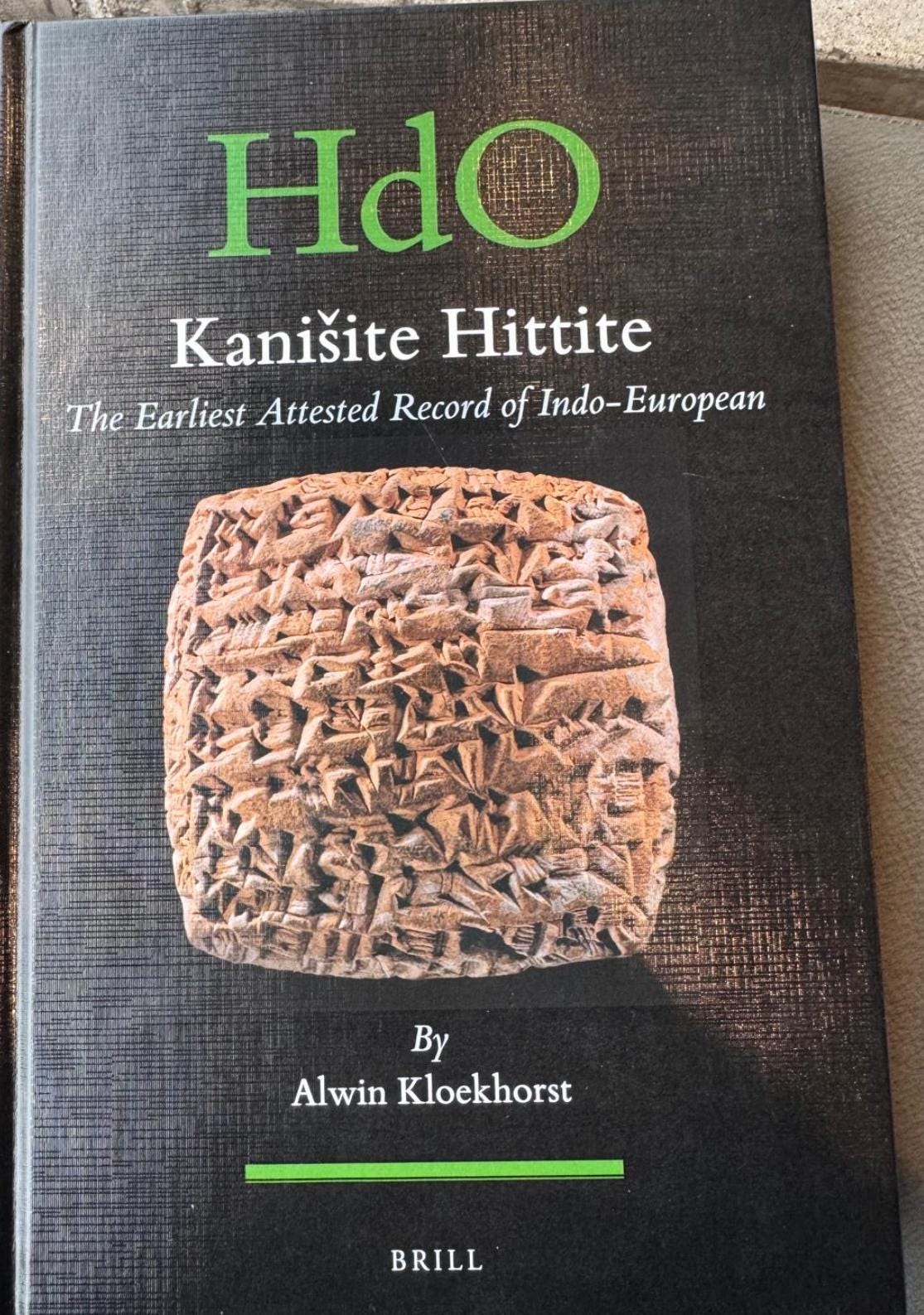
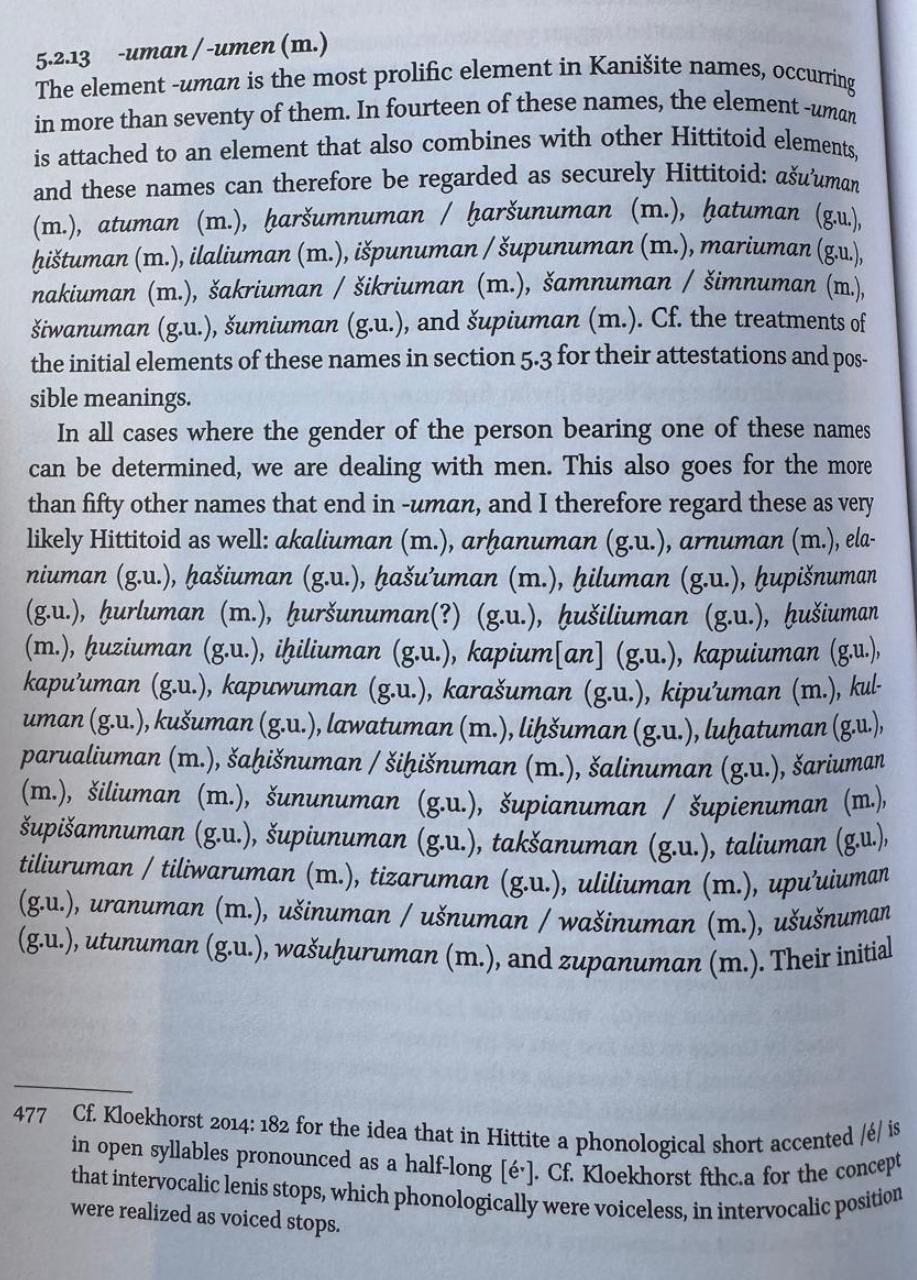
Continued:
Human Safaris - Humanity’s Future Began in Kherson. Twice.
⚡️ Kherson today is the future of EVERY single European city.
Continued from:
Why it’s wrong to platform Russian scientists - Episode XXXV
Two of the most important papers since William Jones announced the discovery of Indo-European languages were published this week.
Finding Manuland I
In October 2021 I was returning from my final vacation before my forced retirement from my beloved diplomatic posting to Ukraine.



